Growing with fungi
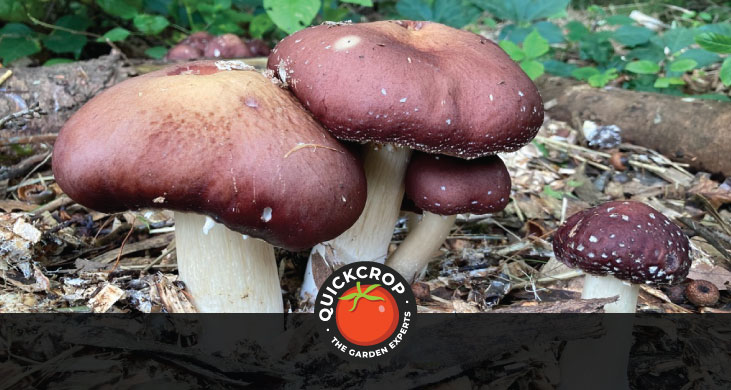
Regular readers will have heard me mention my farmer friend Clive Bright before (aka 'The Rare Ruminare'). He farms his 50 or so acres of Sligo countryside with the lightest touch and produces the most incredible organic beef which he sells direct online.
Clive is an inspiring steward of his land which is farmed to create a species rich grassland able to support healthy animals without relying on supplementary feeds. His Hereford, Shorthorn and Angus herd is 100% grass fed (no high protein grain mixes for fast weight gain) using clever 'holistic grazing' techniques to extend the grass season.
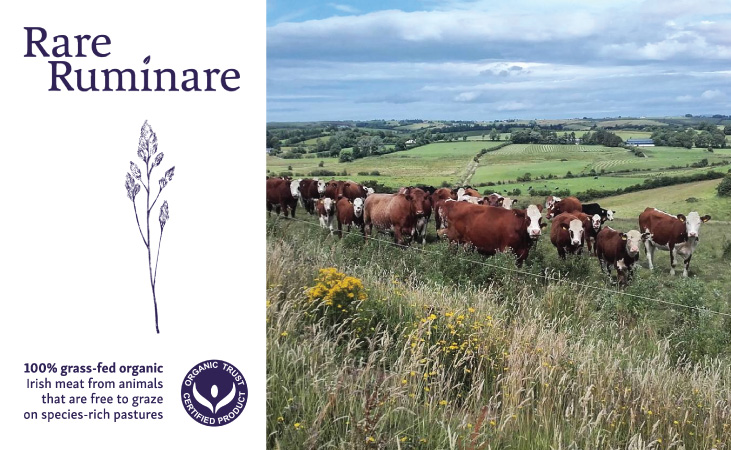
The result of all this is beautifully marbled meat with a depth of flavour that you will struggle to find elsewhere. I am giving him a plug here (and doing you a favour) as he put out his friendly paw to help me with my slug problem as you will see if you continue reading. If you'd like to order some of Clive's fabulous produce, you can view his site by clicking the blue button below.
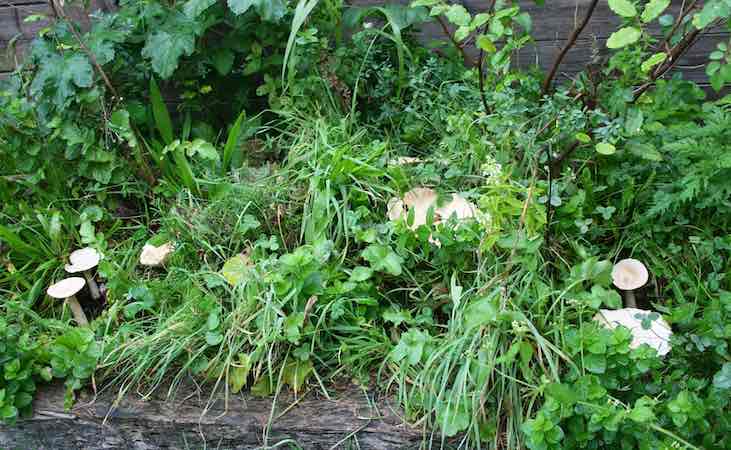
Mycogardening
So, as I said last week, in order to get on top of the slugs in my garden, I had decided on a two pronged approach. The short term solution was to add poultry to eat the slugs (I had thought chickens but am now thinking chickens and ducks) but, in the long term, I also need to make the garden more bio-diverse. The idea of increasing bio diversity is to attract more of the slugs natural predators so in both cases I am looking for something to eat slugs and snails and keep them off my vegetables.
I sent Clive a text (he is also the knowledgeable PR and development officer for the Organic Trust) for advice but, rather than offering slug control methods, he suggested that I might be the problem rather than the slugs. Cheers Clive.
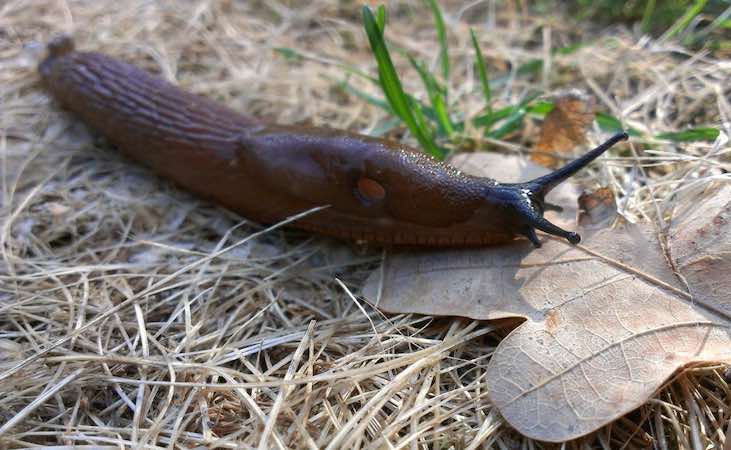
The point that he cheerfully made (he always seems to be in good form) was that the slugs are just doing their job as decomposers of weak, dead or dying organic matter. I pointed out that my seedlings weren't weak, dead or dying to which he replied, 'that's what you think'.
He offered to call into the office for a chat (naturally, I couldn't wait) where he expanded on his point that while freshly planted seedlings might look 100% to me, they may not look that way to a slug. Amongst other things, seedlings may be less than optimal due to the seed quality, the compost seedlings are growing in, the weather when they are planted out or the soil they are planted into. He also told me about a local organic grower who hasn't lost a single seedling to slugs despite experiencing the same surge in populations that we all have. I thought, this I gotta see.
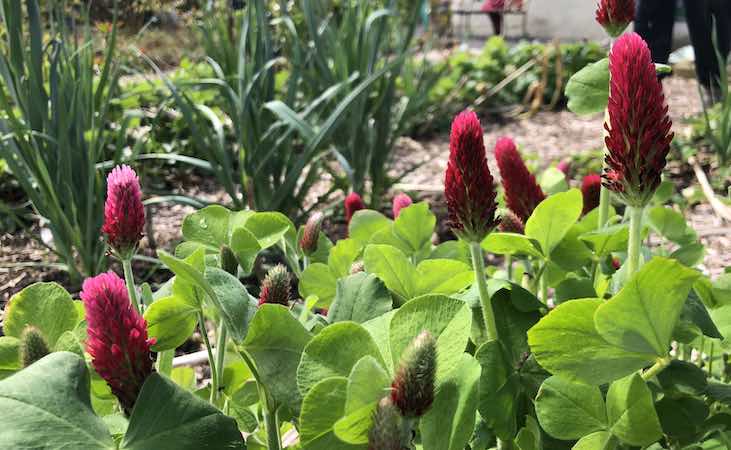
The next morning I found myself standing in Scott Huey's garden and surveying a beautiful and diverse patch filled with fruit, vegetables, crimson clover and some plants (e.g. nettles) which most of us would see as weeds. The paths between the beds were covered with deep layers of wood chip with the whole place looking pretty and very much at peace with itself.
When Scott explained that he is a mycogardener, I smiled politely and hoped it would become clear what he meant as we talked so I wouldn't have to ask him. As it turned out, the woodchip paths were the key as they are home to fungi (wine cap mushrooms to be exact) which are a key component of the gardens eco system.
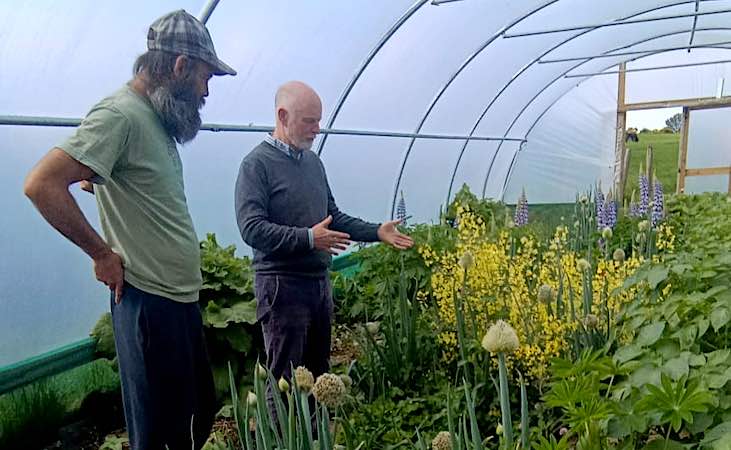
The photo above shows me looking rather bald and uptight (I had been recently released into the wild from the office) against the vibrant splendour of both Scott's polytunnel and his impressive beard. The tunnel included the same diverse planting as the beds outside. You can see plants grown to produce seed (broccoli and onions) as well food crops (potatoes) with clover and lupins woven through the patchwork to improve the soil or attract pollinators. The same wood chip paths also traversed the tunnel, again invisibly growing wine cap mushroom mycelium.
But what's the point?
This is where it got really interesting. There are 3 types of fungi of interest to us in the garden; pathogenic, saprophytic and mycorrhizal. A relatively small group of pathogenic fungi cause disease in live plants while the vast majority of fungi are saprophytic and feed only on dead organic material. Many of us are also now familiar with mycorrhizal fungi that form a symbiotic relationship with plants by providing moisture and nutrients in exchange for sugars exuded by plant roots.
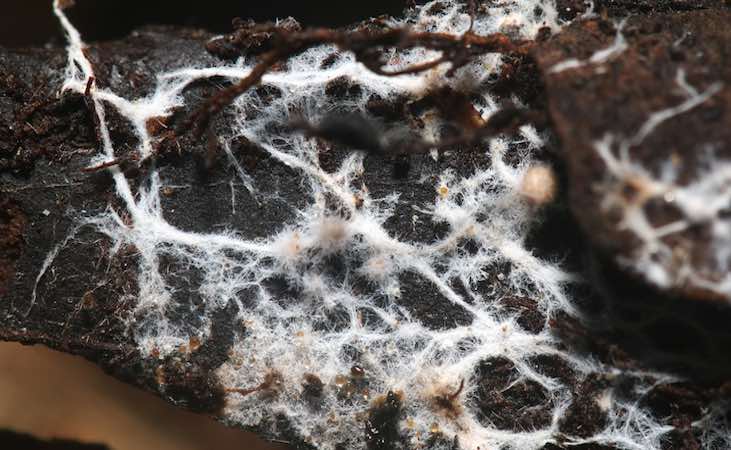
While mycorrhizal fungi have become very popular (there are now many mycorrizal products on the market), less attention has been paid to the saprophytic group in terms of garden health but that may be about to change.
Similar to our friends the slugs (they are friends now), the job of saprophytic fungi is to decompose or, more accurately, recycle dead organic matter. These fungi species would have been the original builders of much of our soil having recycled carbon based material from the forests that once covered the country.
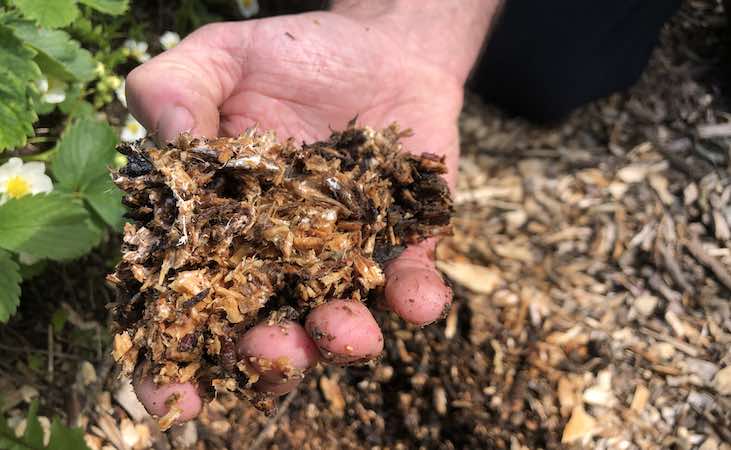
The paths between Scott's beds give him access to his garden but their primary function is as feeding channels for his fungi. The wood chip is broken down by the wine cap mushroom mycelium to release nutrients which can be accessed by plant roots growing into the paths. The wood chip shown in the photo above has been added relatively recently but already you can see the white fungal strands beginning to break it down into humus, a nutrient rich and moisture retentive ingredient to healthy soil.
I am not going to pretend to understand all that is going on here (and apologise for any inaccuracies) but there is no question that plants living alongside beneficial fungi, whether saprophytic or mycorrhizal, do better than those grown in soil without. This loop all makes sense when you think about it; both the fungi and the plants want the other to grow as they are each other's food source. The fungi are farming the plants and the plants are directly or indirectly farming the fungi.
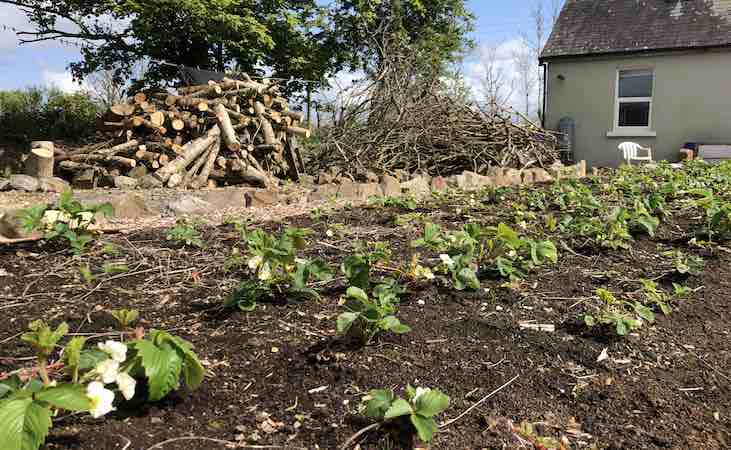
But back to the slugs
As you can see above, Scott laughs in the face of convention as, rather than removing slug habitats, he seems to be creating them. The piles of timber in the background are ash branches which will be used to make wood chip but, in the meantime, are a perfect home for slugs.
Incidentally, the ash die back disease, which is the reason why the ash trees needed to come down, is caused by the pathogenic fungus Hymenoscyphus fraxineus. It is interesting that the woody material brought down by one fungus is being recycled by another to provide nutrients for new plants and, ultimately if the garden were left alone, new trees. We can rightly mourn the death of the nations ash trees but, if recycled by saprophytic fungi, they can give a valuable gift to a new generation of plants.
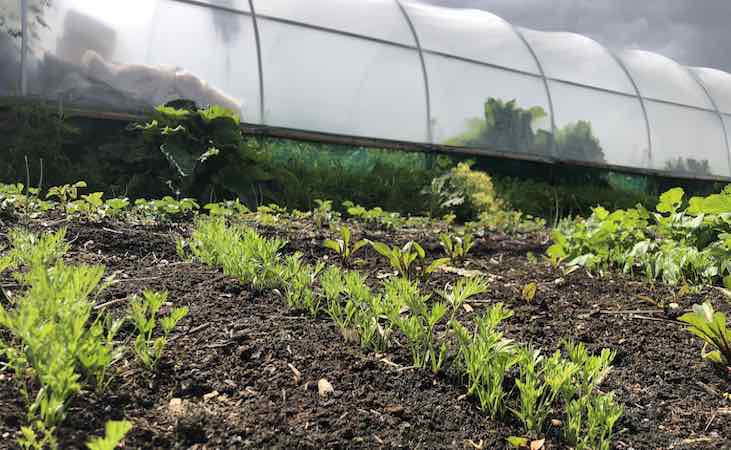
But why aren't Scott's seedlings being demolished by the slugs in the wood pile? Because his garden is in balance. There is more to it than the fungal networks, he also saves his own seed, makes his own liquid feed from wormcast and grows his seedlings in his own nutrient rich compost. It is a multi faceted approach that results in seedlings that not only look 100%, they are 100% healthy and therefore the slugs have no interest in therm.
The fungi are a big part of his gardening approach, they provide the (mostly) invisible underground backbone over which the plants that we see above ground can flourish. The vast mats of fungal hyphae which Scott's garden sits on works away beneath the surface recycling nutrients from dead plant material or mining minerals from rocks in the subsoil. The mycorrhizal networks actively transport these nutrients directly to the plant roots to help them grow and produce more sugars for the fungi which the plant happily exchanges. It is an ancient deal that works for everyone.
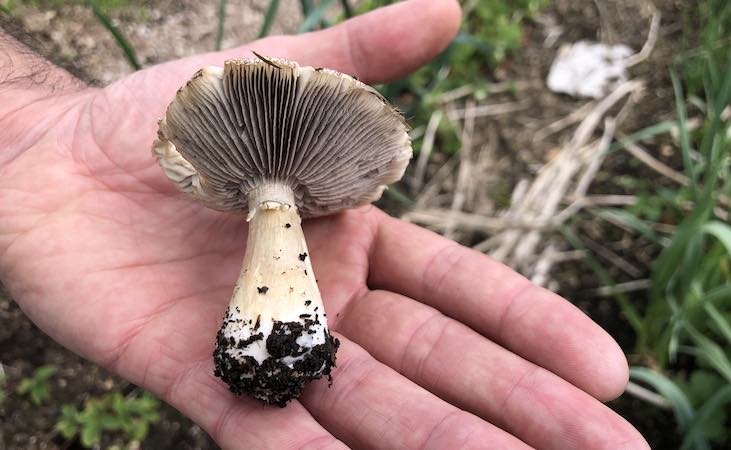
I guess the whole point is that we need to stop thinking in terms of separate organisms in a garden, we need to think of it as a whole. We could view the green, above ground plant life as a solar panel that produces energy for the below ground nutrient processing and transport system that, in turn, fuels the solar farm.
A car engine is made from many completely different components that come together to form a single powerful engine. In Scott's garden, the different components include wormcast compost rich in beneficial bacteria, bio diverse planting, fungal networks and, of course, slugs that all work in harmony to create a powerful green engine that could, and probably should, be viewed as a single entity.
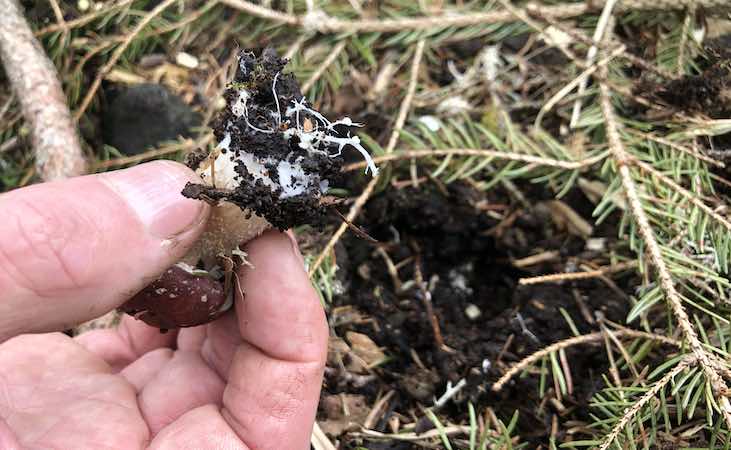
All of the above has been somewhat of a revelation to me having seen the system working in practice; the concept brings together parcels of knowledge I have gained over the years and neatly weaves it all together. It was a dizzying feeling standing in the middle of it and finally realising the power of what lay beneath my feet, it is complex yet simple all at the same time.
There is more of course, we haven't touched on the wine cap mushrooms themselves which are a delicious edible crop with many health benefits. I am also keen to learn more about Scott's homemade liquid feed/pant tonic that inoculates seedlings with beneficial bacteria to support and protect them when planted out (thus taking them off the slugs menu) but that will have to wait for another day.
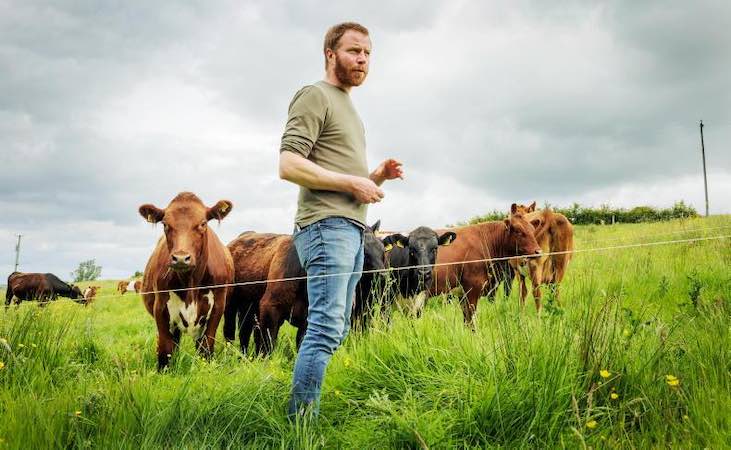
I am going to finish with Clive (and a picture of him that I pinched from a Farmer's Journal article, photo James Connolly) as both he and Scott are ultimately doing the same thing - regenerating soil. Scott is literally building new soil by directly farming fungi while Clive, by growing pasture rich in plant species, increases biomass which ultimately builds new soil. A diverse pasture also means a more diverse fungal network with more processing power.
Trees are also a key component on Clive's farm which is moving towards agroforestry where his animals graze among tress rather than having separate grazing and forestry areas. The trees provide shelter for livestock, stabilise the soil, manage drainage and mine minerals (with help from mycorrhizal fungi) from deep below the surface. The leaf litter and any fallen timber from the trees is processed by saprophytic fungi into nutrient rich soil and around we go again.
I would like to thank both of these gentlemen for their time and for the responsible way that they tend their land. They are firmly focused on a sustainable future rather than short term gain and have inspired me to make more efforts in my own garden.
